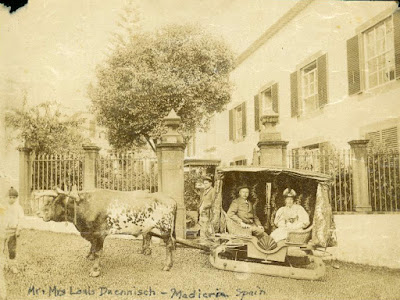The September 15, 1885
Sandusky
Daily Register carried an advertisement for
Buffalo Bill’s Wild West Show, to be held at the Sandusky
Fair Grounds (in the area now known as
Cable Park) for “positively only one performance,” on Thursday, September 17 at 2:30 p.m.
Admission was fifty cents for adults, and twenty five cents for children.
Streetcars ran directly to the fair grounds, and railroads brought excursion
groups to the show.
A grand parade was held at 10 a.m. on the day of the
performance. The show advertised the appearance of Sitting Bull, White Eagle,
and fifty-two braves, along with Miss Annie Oakley, Frisking Elk, and the phenomenal
boy-shot Johnny Baker. The show claimed to have the largest herd of buffalo
ever exhibited.
Buffalo Bill was to shoot at clay pigeons while on foot, but
he would shoot at glass balls while riding horseback at full speed. The ad
continued to state that the ten cowboys who rode bucking horses were wilder
than the horses themselves. Equestrian
acts, lassoing, and steer riders rounded out the program. Proprietors Cody and Salisbury promised to
“fulfill every promise.”
Charles E. Frohman, in his Sandusky Potpourri, recounted Sandusky’s only buffalo
chase. After Buffalo Bill’s September 17th
show closed, a buffalo escaped near the railroad depot at North Depot and
Mcdonough Streets. The buffalo ran out Hayes Avenue, as a dozen Native Americans
pursued it on horseback. It ran through the yard of C. C. Keech’s residence,
and kept going through neighboring fields, destroying corn stalks along the way. After an hour’s
pursuit, the buffalo was caught and taken back to the depot.
(About twenty years later, the C. C. Keech home later became part of Sandusky’s Providence Hospital, now the South Campus of
Firelands Regional Medical Center.)
While the chase was in progress, two cows belonging to
Patrick Gagen were frightened, and ran away. Dairy farmer Louis Benckart and his sons found
the two cows, and refused to give them back, stating that the cows damaged
their fields. Mr. Gagen took legal action to recover the cows.

 this blog
this blog































